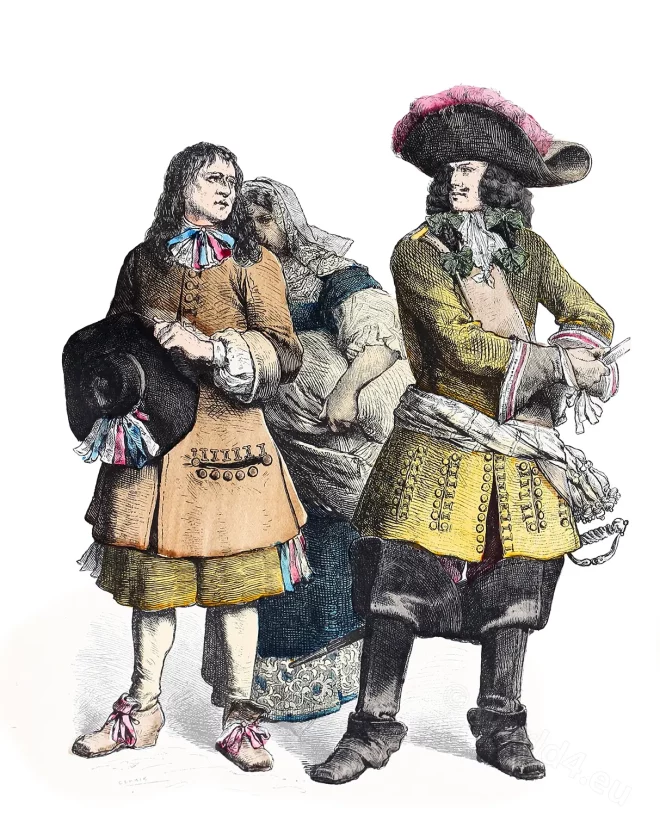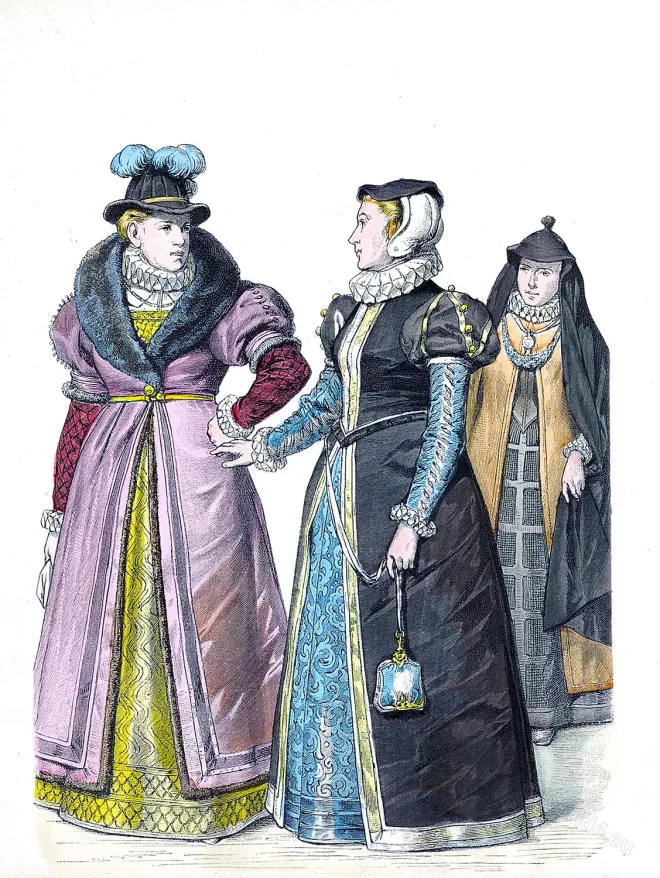Selections of the ancient costume of Great Britain and Ireland from the seventh to the sixteenth century, by Charles Hamilton Smith
Category: Europe
Fashions in Europe. European Costume and Cultural History.
Princess Alexandra Amalie of Bavaria (1826-1875).
Otto Wustlich: Portrait of Princess Alexandra of Bavaria (after an oil painting by J. Stieler).
London 1590. Merchant and merchant’s wife.
Costumes of a Merchant and merchant’s wife. London 1590.
German patricians in 14th century dress.
Münchener Bilderbogen 1848 to 1898. On the history of costumes.
Renata of the House of Lorraine, 16th c.
This is Renée de Lorraine, daughter of the Duke of Lorraine François I” and Christine of Danemarck.
L’Étude, dit aussi parfois Le Chant. J. H. Fragonard
The painting, called “The Study” before the subject was identified in 2011
France. Peasants. Gendarme on horseback c.1680.
Last third of the XVIIth century. Reign of King Louis XIV (1643-1715).
Marguerite de Valois-Angoulême, duchesse de Berry
Marguerite de France was the fourth daughter of King Francis I of France and Claude, Duchess of Brittany
Costumes of distinguished women. London 1590.
On the history of costumes. Fashion history. Baroque period. London 1590. Distinguished women.
Odet de Coligny, Cardinal de Châtillon.
French Huguenot leader, Catholic prelate of the Renaissance










